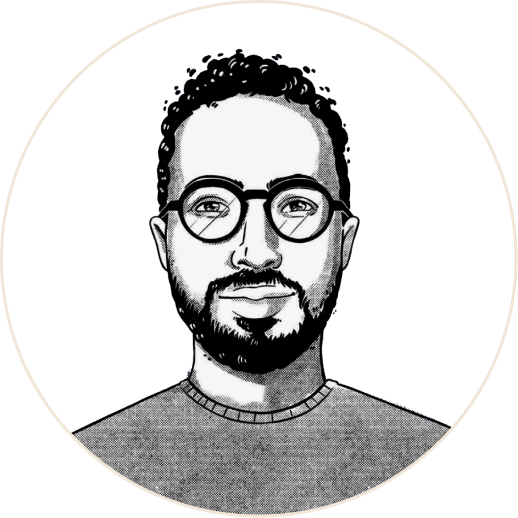%20Agencies%20%26%20Services%20of%202025.webp)

%20Agencies%20%26%20Services%20of%202025.webp)
Search moved from “ten blue links” to “one good answer.” AEO is how you become that answer. It’s not a trend; it’s the work: entities, structure, factual clarity, distribution, and weekly monitoring across ChatGPT, Gemini, Claude, Perplexity, and friends.
Below is a methodical and data backed AEO agencies list to help you navigate the space- teams shipping real AEO, not just audits, retro fitted SEO and dashboards. Start with the comparison table, then read the notes: what they fix, how they measure, and where each shines. If you own organic growth in 2025, this is your shortlist and your checklist.
I reviewed public artifacts (service pages, research, frameworks, talks, and case studies) and weighted the things that correlate with LLM visibility and revenue:
*Team sizes are approximate public ranges (LinkedIn/company pages/industry trackers). Sources are cited under each agency.
Why #1: NoGood is the rare agency that pairs hands-on AEO execution with a purpose-built platform (Goodie). They run LLM visibility audits, schema and technical rollouts, prompt-gap/citation analysis, and continuous monitoring inside Goodie to track wins across ChatGPT, Gemini, Claude, and Perplexity. That closed loop (monitor → fix → measure) is what most brands are missing.
Best for: scaleups and enterprises that want AEO embedded into GTM (not a side quest).
Standout proof: Dedicated AEO service offering; platform posts, product reviews, and feature pages showcasing Goodie’s real-time visibility tracking and optimization workflows.
Offices: New York (HQ, SoHo), Miami (Brickell), Los Angeles (West Hollywood).
Team size: 65–100 (LinkedIn)
Clients: MongoDB, TikTok, Amazon, Intuit, Nike, P&G, Microsoft
Omniscient publishes pragmatic AEO thinking and executes expert-led content in model-friendly formats (clear structure, FAQs, schema, intent mapping). If your pipeline depends on premium B2B content that models actually quote, they’re strong.
Best for: B2B SaaS with editorial muscle that needs AI-answer visibility.
Offices: Remote; listed hubs include Austin, Boston, Chicago, NYC.
Team size: ~11–50 (LinkedIn). Some trackers list 50.
Clients: SAP, Hotjar, TikTok, Adobe, BetterUp
NP Digital formalized AI Engine Optimization with entity-first playbooks and “Search Everywhere” guidance that blends PR, social, and classic SEO to influence AI answers. Good fit if you need speed + scale and executive-ready narratives.
Best for: enterprise e-com & SaaS needing integrated earned media + AEO.
Offices: San Diego (HQ), London, Lehi, Las Vegas, Toronto, Belo Horizonte + APAC expansions.
Clients: Adobe (XD case study), SoFi, CNN, Western Union, TechCrunch (public lists/case page).
Brainlabs publishes solid AI-search guides (zero-click realities, industry impact) and paid-search playbooks for AI surfaces. If you want brand visibility across organic + paid AI units with strong testing hygiene, shortlist them.
Best for: global advertisers aligning AEO with media.
Offices: London (HQ) plus global US/EMEA/APAC locations.
Team size: ~501–1,000 (LinkedIn; third-party trackers ~900+).
Clients: Mars Petcare, Jo Malone London, Henkel, JustGiving.
Found’s Everysearch™ methodology plus Luminr platform maps visibility across search + AI assistants. If your exec team wants share-of-answer reporting and competitor tracking, this combo is compelling.
Best for: multi-market brands that need cross-surface intelligence.
Offices: London (HQ), New York office presence listed on site.
Team size: 51–200 (LinkedIn).
Clients: Fender, Toolstation, House of Marley (public case studies).
Growth Plays (John-Henry Scherck) is revered in B2B for outcome-anchored content architectures that translate well to AEO (buyer-question clusters, solution content, clean structure). Great for lean teams who need clarity and output.
Best for: B2B SaaS needing strategic content planning that models can quote.
Offices: Los Angeles.
Team size: 2–10 (LinkedIn); one customer story cites ~11 staff.
Clients: Lattice, Heap, Calendly, LaunchDarkly (industry writeups/client spotlights).
If you’ve got complex architecture, multilingual content, or compliance overhead, iPullRank’s Relevance Engineering approach is what you want. They publish the AI Search Manual and teach teams how to score and engineer content that models retrieve and cite (passage-level optimization, semantic scoring, AI simulation).
Best for: Fortune-level technical SEO + AEO, heavy content operations.
Offices: New York City
Team size: 10–40 (LinkedIn/BuiltIn/Growjo estimates).
Clients: Public references include SAP, American Express, HSBC; multiple anonymized Fortune accounts under NDA; recent AIO/AIOV case studies (telecom, ecommerce, auto).
Their “Pain Point SEO” philosophy focuses on high-intent topics—exactly the questions AI engines try to answer. If your organic motion is conversion-led and you need clean, answerable pages, they fit.
Best for: startups and mid-market aiming for demo-ready queries.
Offices: Remote (US).
Team size: 2–5 (Clutch customer reviews).
Clients: Leadfeeder, Clearscope, Crazy Egg, Yelp, Exploding Topics (site + industry lists).
Broad services with credible structured-data education (JSON-LD guidance) and enterprise SEO heritage. Good if you want AEO tied into web, content, PR, and media under one roof.
Best for: brands wanting one partner across channels while standing up AEO.
Offices: San Diego.
Team size: 201–500 (LinkedIn).
Clients: Tony Robbins, Experian, HBO, DoorDash (company announcements).
Contently’s LLM Optimization Blueprint and a giant vetted talent network make them a strong pick when you must rewrite at scale and keep AI citations positive across long-form assets.
Best for: enterprises with heavy editorial operations and governance needs.
Offices: New York (HQ).
Team size: ~130–160 (industry trackers/LinkedIn).
Clients: RBC, Walmart, Cox Communications (+ dozens of enterprise case studies).
Prioritize these five signals:
RFP questions you can steal:
What to expect in an AEO scope (sane, practical version)
Is AEO replacing SEO?
No. SEO keeps you discoverable; AEO ensures you’re the answer once discovered. They’re complementary.
How do we measure ROI without clean referrals from AI answers?
Use citation frequency + sentiment, branded search lift, assisted conversions, and sourced snapshots tied to pipeline. Your partner should show this in a single dashboard.
What’s the fastest win?
Fix entities and structure: Organization/Product schema, crisp Q&A sections, and reconciling brand facts across the web. Many brands see AI answer shifts within days to weeks once ambiguity drops.